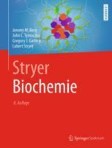Search
Search Results
-
Why to Study Peptides from Venomous and Poisonous Animals?
Venom and poison peptides are powerful biological weapons and have proven immense pharmacological potential because of their high binding affinity to...

-
Chapter 13 Behavior and Fertilization of Squids
Recent studies have highlighted the intriguing reproductive behaviors in some coastal squid species. Here we review briefly pre-copulative male–male...
-
Roles of m6A RNA Modification in Normal Development and Disease
During normal developmental and disease processes gene expression plays a central role. Multiple layers of regulation play roles in expression of...
-
Microbial and metabolomic profiles in correlation with depression and anxiety co-morbidities in diarrhoea-predominant IBS patients
BackgroundPsychological co-morbidities in irritable bowel syndrome (IBS) have been widely recognized, whereas less is known regarding the role of gut...

-
Independent evolution of pain insensitivity in African mole-rats: origins and mechanisms
The naked mole-rat ( Heterocephalus glaber ) is famous for its longevity and unusual physiology. This eusocial species that lives in highly ordered and...

-
Modes of Calcium Regulation in Ischemic Neuron
Calcium (Ca 2+ ) dysregulation is a major catalytic event. Ca 2+ dysregulation leads to neuronal cell death and brain damage result in cerebral...

-
Animal protein toxins: origins and therapeutic applications
Venomous animals on the earth have been found to be valuable resources for the development of therapeutics. Enzymatic and non-enzymatic proteins and...

-
PHAB toxins: a unique family of predatory sea anemone toxins evolving via intra-gene concerted evolution defines a new peptide fold
Sea anemone venoms have long been recognized as a rich source of peptides with interesting pharmacological and structural properties, but they still...

-
Three-finger proteins from the Ly6/uPAR family: Functional diversity within one structural motif
The discovery in higher animals of proteins from the Ly6/uPAR family, which have structural homology with snake “three-finger” neurotoxins, has...
-
Changes in expression of neurotrophins and neurotrophic factors in the model of eosinophilic inflammation of the esophageal mucosa
Esophageal sensory and motor nerves contribute to the symptoms of eosinophilic esophagitis, however, the mechanisms of this neural dysfunction are...
-

-
ASIC1 and ASIC3 contribute to acidity-induced EMT of pancreatic cancer through activating Ca2+/RhoA pathway
Extracellular acid can have important effects on cancer cells. Acid-sensing ion channels (ASICs), which emerged as key receptors for extracellular...

-
Snake venom toxins: toxicity and medicinal applications
Snake venoms are complex mixtures of small molecules and peptides/proteins, and most of them display certain kinds of bioactivities. They include...

-
A Strategy for Production of Correctly Folded Disulfide-Rich Peptides in the Periplasm of E. coli
Recombinant expression of disulfide-reticulated peptides and proteins is often challenging. We describe a method that exploits the periplasmic...
-
Biological activity of sevanol and its analogues
Previously, a novel lignan sevanol was isolated from Thymus armeniacus , its structure was elucidated; and it was shown that it efficiently inhibits...
-
Inhibition of acid-sensing ion channel 1a in hepatic stellate cells attenuates PDGF-induced activation of HSCs through MAPK pathway
Acid-sensing ion channels (ASICs), a group of Na + -selective and Ca 2+ -permeant ligand-gated cation channels, can be transiently activated by...

-
Intracellular ASIC1a regulates mitochondrial permeability transition-dependent neuronal death
Acid-sensing ion channel 1a (ASIC1a) is the key proton receptor in nervous systems, mediating acidosis-induced neuronal injury in many neurological...

-
Potassium Versus Sodium Selectivity in Monovalent Ion Channel Selectivity Filters
Transport of Na+ and K+ ions across the cell membrane is carried out by specialized pore-forming ion channel proteins, which exert tight control on...
-
Acid-sensing ion channels and their modulators
According to a modern look acid-sensing ion channels (ASICs) are one of the most important receptors that perceive pH change in the body. ASICs...
-
Plasma membrane poration by opioid neuropeptides: a possible mechanism of pathological signal transduction
Neuropeptides induce signal transduction across the plasma membrane by acting through cell-surface receptors. The dynorphins, endogenous ligands for...

